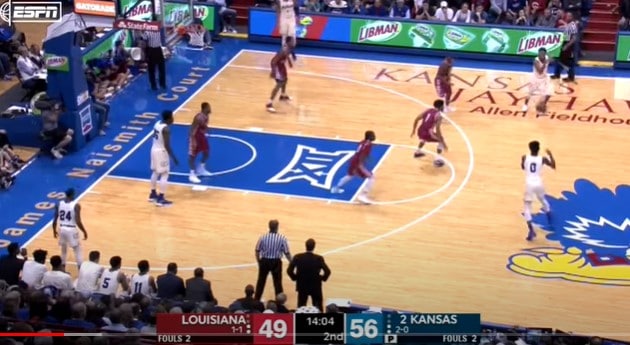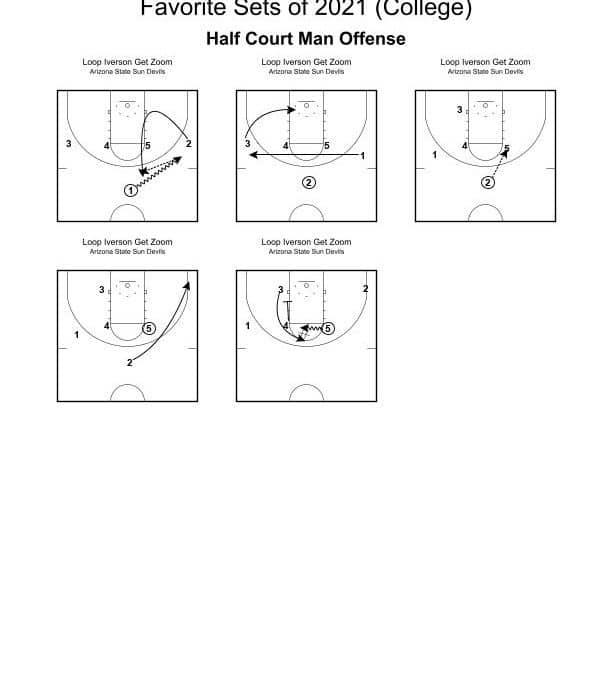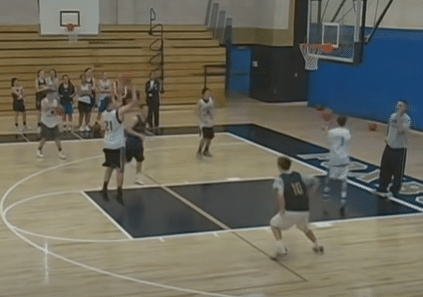Timeout Usage by Adam Spinella
Coaching philosophies on timeout usage vary. You coach your players to value every possession in a game, not just the ones at the end of a game. Your philosophy on timeouts should be the same way. I had a long debate with a few fellow coaches about the usage of a final timeout in the final minutes of a close game just to save possession. Essentially it boiled down to what do we value more, the timeout or that one possession?
I don’t think there’s a definitive right answer to this question; it is all dependent on time and score. I tend to value each possession more than the timeout, since the team with the most possessions usually will convert most in late-game situations. In addition, the end of a game in a very close game is slowed down dramatically with fouling, giving a coach time to set up what he wants without needing to call a timeout. Late-game execution is more important than having timeouts… as long as you practice those types of scenarios.
In order to avoid bad timeouts that cost you a key timeout late when you may need it, here are a few do’s and don’ts for timeout usage.
Do’s:
Timeouts should serve four purposes: changes in momentum, execution in a precise scenario, maintaining possession or creating a rest. The third and fourth are the most obvious: if players are sucking wind and the flow of the game hasn’t seen a stoppage, sometimes a timeout is necessary – especially if you cannot turn to your bench. High-level college games have built-in TV timeouts to accomplish that goal, but high school and lower-level colleges have to be aware of a long-running clock. If there is a loose ball and your player is on the floor, try to save possession, regardless of the possession arrow – you never know when you may need that arrow to be in your favor later. If you are about to get a five-second call on an inbound situation or a ten-second call getting it across half-court, try to maintain that possession.
Timeouts should be called when you need the momentum to shift or stay a certain way. It can be to stop the run of an opposing team and try to take their crowd out of it; it can be to keep momentum on your side by calling a timeout after a made basket. There you can set up a full-court press, a change in defense or at least get the other team into their huddle with their heads down. Changes in momentum are the biggest cause for timeouts early in games. Basketball is a game of runs; using a timeout to stop or start a run can be huge.
Late-game execution is the difference between winning close games and losing them. The whole reason coaches save timeouts and tend to be conservative with them is because timeouts are conducive to having strong execution in these scenarios. It can be drawing up a play on offense, executing on defense for when to trap/ foul, or even reminding players who to foul and who not to foul. If you are conservative with your timeouts early in a close game, your team will reap the benefits later on if the game remains close to the end. Remember the old adage “I’d rather have them and not need them than need them and not have them”.
Don’ts:
Here are four timeouts to avoid calling during the fourth-quarters of close games. If timeout usage is all about maximizing amount and results of possessions, then these four types of timeouts would damage the maximization of future or current possessions.
Don’t try to “ice” a shooter with your final timeout. The other team is on the free throw line for two shots. You’re down or you’re tied up, there’s less than three or four seconds on the clock, not nearly enough time to use your timeout to get a high-quality shot at the rim. Some coaches will call their timeout to try to “ice” the shooter to get in his head. I am staunchly opposed to this tactic. This isn’t football, where if he misses the attempt you will have 40 seconds before your offense can make the next play. If you call a timeout to ice a free throw shooter, you will tell your team what to do if he makes the free throw – what inbound play you want to run to get the best shot possible.
If the free throw is missed, your players likely will be in chaos. Some will try to get to the same spots for that inbound play, which is now scrapped due to the time on the clock. You’re relying on a player getting a rebound, finding an outlet pass and advancing the ball up the court to get a quality shot.
Instead of using the timeout to ice the shooter, let him shoot it! Instruct your players to call a timeout if he misses the shot as soon as they grab the rebound. That way, make or miss, you will be able to draw up and execute your last play. Don’t leave anything up to chance. Control the scenario as much as you can.
Don’t allow an opposing player in foul trouble to be subbed out on defense. This is usually a tactic for earlier in the fourth-quarter, before late-game execution is what timeouts will solely be used for. If the opposing team has a player with four fouls, his coach may want to go offense-for-defense, resting him on defense so he doesn’t pick up a fifth foul. If their team scores, even though it may create a small momentum swing or there may be a huge defensive breakdown, try to resist the urge to call a timeout. Attack that player on offense. He may not commit the foul, but he’ll also be cognizant of his role. In high school and college athletics, valuable players with four fouls become the most statuesque defenders that need to be exploited. Plus, saving that timeout for late-game execution could be meaningful at that point.
Don’t use a timeout after a bad call from a referee. Referees have a large impact on the way a game plays out in the fourth quarter. They may be calling a game tight or letting the players play physically, and you as the coach could disagree with whichever style they employ. But resist the urge to give your players any excuse for why things aren’t going their way other than their own performance. Execution and achievement are the goals; complaining about a bad call only slows down the pursuit of those goals. Remember, decisions based off emotion aren’t decisions at all – they’re reactions. Don’t be a reactionary coach!
Don’t call a timeout when your opponent is on offense and out of timeouts. This one really bugs me. I don’t care what the scenario is or what my team may gain from a timeout and talking over our defensive strategy. You cannot allow your opponent to draw up an end-game play if they have no timeouts. Punish them for not using their timeouts well earlier/ not having one for late-game execution. It is always easier to get into solid defensive position without a timeout than it is to get the right shot in a late-game scenario. Don’t bail out your opponent.
Coach Adam Spinella is entering his first season as an Assistant Coach at Culver Acadelinmies in Culver, IN. Spinella spent the three years prior as a Student Assistant Coach at Division III Dickinson College. The Dickinson Men’s Team advanced to two NCAA Tournaments and accumulated an overall record of 59-26 (.694) during the three-year span, with the 2013-2014 season ending in the Division III Elite Eight. A native of Bow, New Hampshire, Spinella has a keen interest in X’s and O’s, particularly in professional basketball, and skill development.

Follow Coach Adam Spinella on Twitter!!!
Click on the pdf link to download the Timeout Usage:





0 Comments